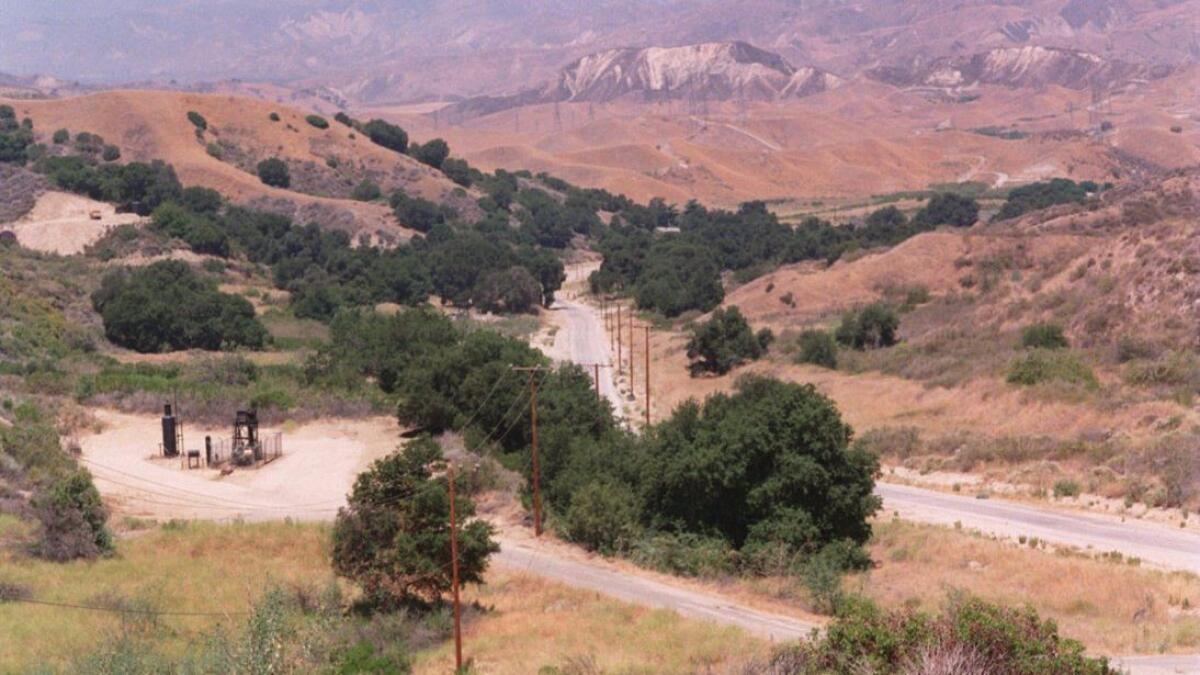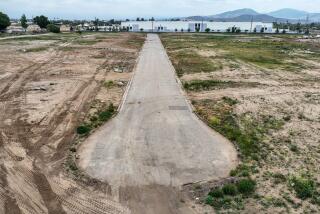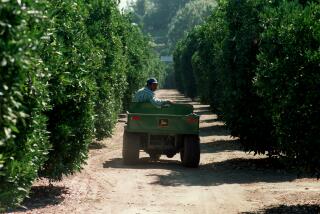Long-debated Newhall Ranch project gets key approvals from county

After decades of controversy, the Newhall Ranch development in the Santa Clarita Valley cleared its last major hurdle Tuesday when county officials certified a revised environmental analysis and approved two of the project’s five planned subdivisions.
The Los Angeles County Board of Supervisors approved an environmental impact report addressing concerns about greenhouse gas emissions and threats to a native fish species that were raised in a 2015 California Supreme Court decision rejecting an earlier version of the report. The board also re-approved the land-use permits for the Mission Village and Landmark Village communities. The actions were approved in two 4-0 votes.
“On the whole, this is a well thought-out project that will bring needed housing supply while ensuring that environmental resources are being protected,” said Supervisor Kathryn Barger, whose district includes the proposed development.
The 21,000-home project has long been opposed by residents and environmental groups, who contend that it will generate greenhouse gases and other pollution and threaten the Santa Clara River ecosystem.
“Santa Clarita can look forward to more toxic air, greater traffic congestion, stress on our already inadequate infrastructure and poor quality of life overall for the foreseeable future,” Santa Clarita resident Cher Gilmore said during the public comment period.
The development site is across a highway from the Chiquita Canyon Landfill, whose expansion was recently approved.
Environmental advocates and the state Supreme Court had also raised concerns about potential harm to the unarmored threespine stickleback. The developer had originally proposed trapping and relocating the fish as a mitigation measure, but the court said that was illegal.
In its revised plan, the developer proposed building bridges and taking other steps to keep construction out of the river, eliminating the need to relocate any fish. It also proposed “net-zero” measures to offset greenhouse gas emissions, such as retrofitting buildings in low-income communities in L.A. and purchasing cleaner cookstoves in Africa.
“Greenhouse gas will always be generated by human activity,” Emile Haddad, chief executive officer of Five Point Holdings, which is developing Newhall Ranch, said in an interview. “The question is, how do you mitigate?”
About 200 people showed up at Tuesday’s meeting to support the development, many wearing “Yes to Net-Zero Newhall” stickers. The developer provided bus transportation for some of them, as well as sandwiches and water in a tent outside the Hall of Administration.
The supporters included representatives of the business community and economic development organizations, who argued that Newhall Ranch would provide needed jobs and housing in the Santa Clarita Valley. A member of a Native American tribe associated with the land also testified in support, as did Climate Resolve, an L.A.-based climate change advocacy organization.
Supervisor Sheila Kuehl abstained from both votes.
“I want to applaud the work that Five Point has done to mitigate the project’s greenhouse gas emissions,” she said, before expressing concerns about using open, agricultural land for the project, and about potential harm to air quality beyond greenhouse gases.
Newhall Ranch was first proposed in 1994, with construction envisioned to begin in 1998, but has been delayed by political and legal battles.
With the county’s vote, the developer has all but cleared the remaining hurdles before it can break ground.
A Los Angeles Superior Court judge must sign off on the revised environmental impact report, which was also approved last month by the California Department of Fish and Wildlife. And opponents of the project could take further legal action.
John Buse, an attorney for the Center for Biological Diversity, which sued the state over the original environmental analysis, said he had “mixed feelings” about how things had played out.
“The resulting environmental report that the county has now prepared is so much better — it does what the Supreme Court told them to do,” he said. “At the same time, we still have these two large environmentally damaging projects approved.”
Buse said his group had not yet decided whether to pursue further legal action.
Twitter: @AgrawalNina
More to Read
Sign up for Essential California
The most important California stories and recommendations in your inbox every morning.
You may occasionally receive promotional content from the Los Angeles Times.











